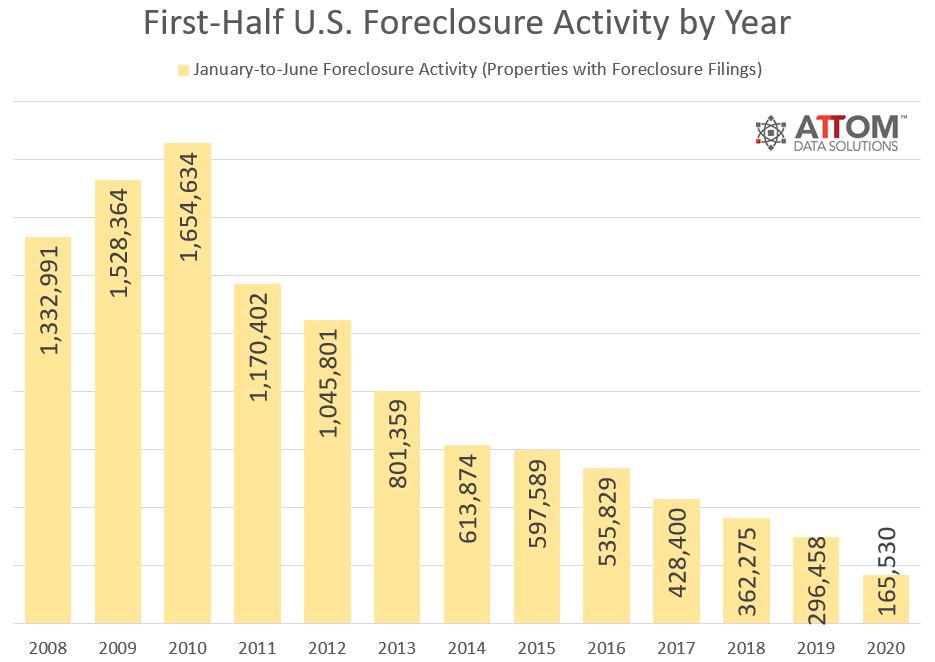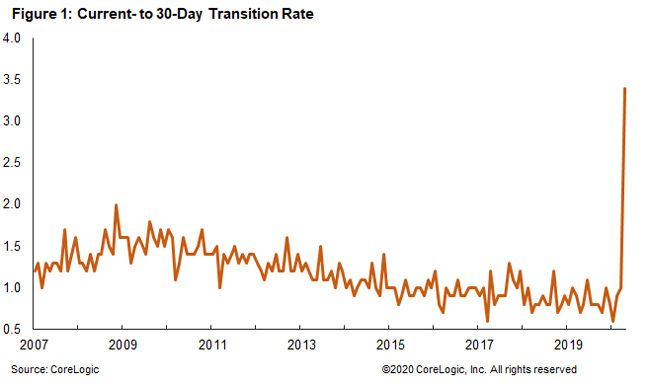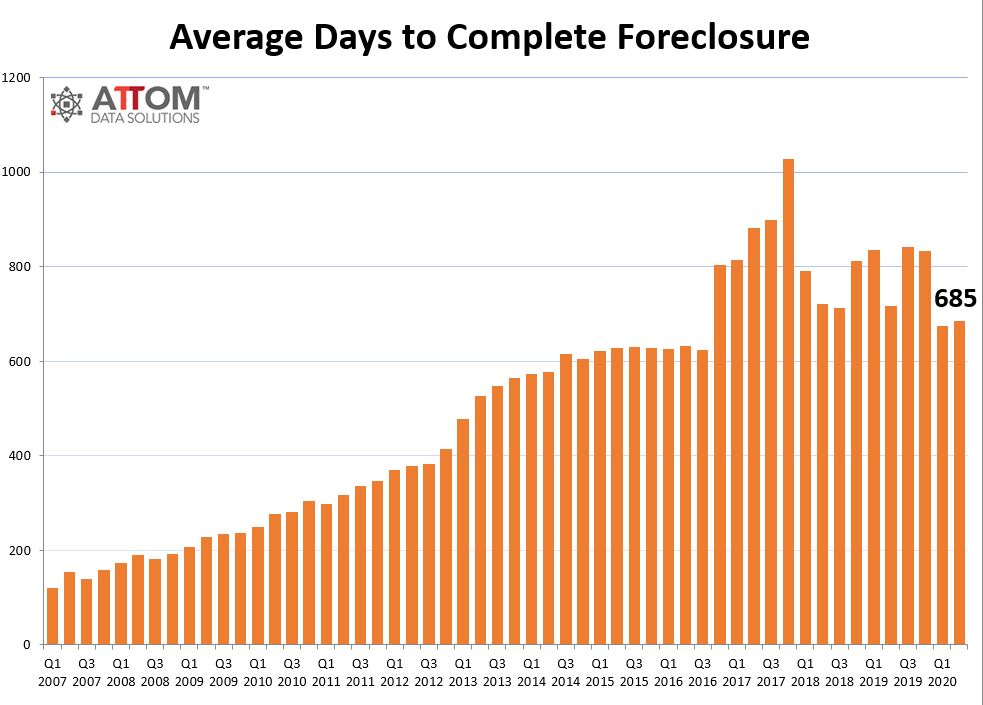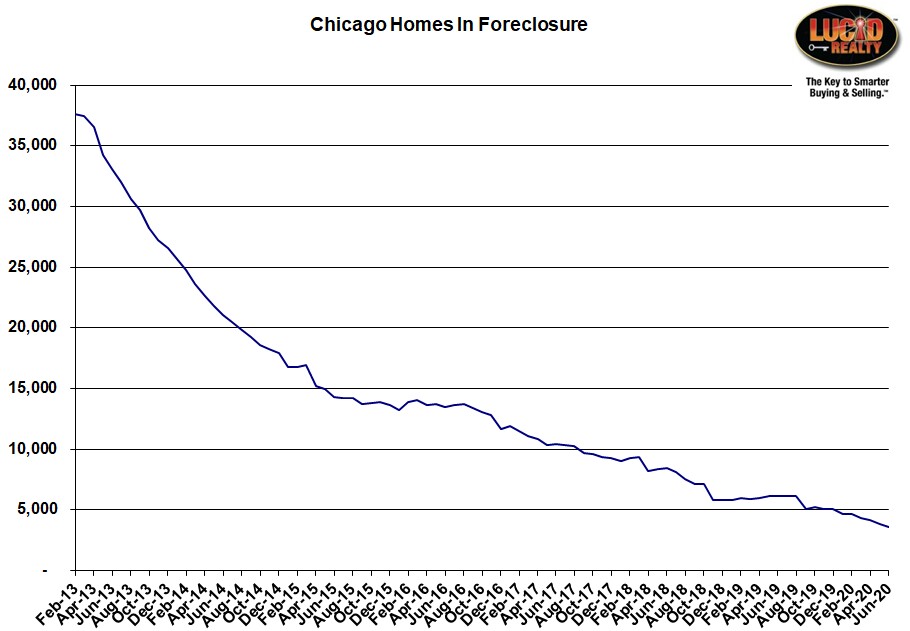When the coronavirus first took the country by storm and people started staying home – in many cases without pay – the federal agencies that support the mortgage market imposed a moratorium on foreclosures. The initial moratorium was going to expire at the end of June but it was extended to the end of August. Because of that we have now seen three straight months where national and Chicago foreclosure activity has hit the lowest levels since I’ve been tracking the data. But what will happen when the moratorium is lifted?
ATTOM Data Solutions released their Midyear 2020 U.S. Foreclosure Market Report last week and updated their RealtyTrac data. The report contains the graph below which shows just how dramatically foreclosure activity has dropped since 2008 and since last year even. That’s a 44% decline in just the last year!
According to Ohan Antebian, general manager of RealtyTrac:
Foreclosure starts and completions were already declining rapidly last year because the housing market and the economy were riding so high. Now they’re down to lows not seen for at least 15 years as the federal government has banned lenders from pursuing most delinquent loans until at least the end of August 2020 to help people weather the pandemic. Distressed property volume is almost guaranteed to increase significantly once the moratorium is lifted because millions of Americans missed their mortgage payments in June and will continue to because of unemployment. But for now, everything is on hold and the foreclosure numbers reflect that pause.
Using the RealtyTrac data I’m able to produce the monthly Chicago foreclosure activity graph below. Activity really plunged starting in April.
Just because foreclosures are way down does not mean that everything is hunky dory. In fact, as you would totally expect, mortgage delinquencies are skyrocketing according to Corelogic. The intentionally (but not my intention) distorted graph below shows the percentage of mortgages that transition to 30 days past due each month. So we are probably in for a huge wave of foreclosures once the moratorium is lifted, which is what Ohan was saying.
One other interesting statistic highlighted in the ATTOM Data report is the time required to complete a foreclosure. As the graph below shows it has been gradually trending down though the most recent quarter did tick up a bit from the first quarter of the year.
Chicago Shadow Inventory
Interestingly, the number of homes in Chicago that are in the foreclosure process continues to decline. I still don’t know how this happens unless there is some kind of data error or there are special circumstances that allow a foreclosure to proceed. Each of the last 4 months has had a decline of over 200 homes.
#Foreclosures #ChicagoForeclosures
Gary Lucido is the President of Lucid Realty, the Chicago area’s full service real estate brokerage that offers home buyer rebates and discount commissions. If you want to keep up to date on the Chicago real estate market or get an insider’s view of the seamy underbelly of the real estate industry you can Subscribe to Getting Real by Email using the form below. Please be sure to verify your email address when you receive the verification notice.




